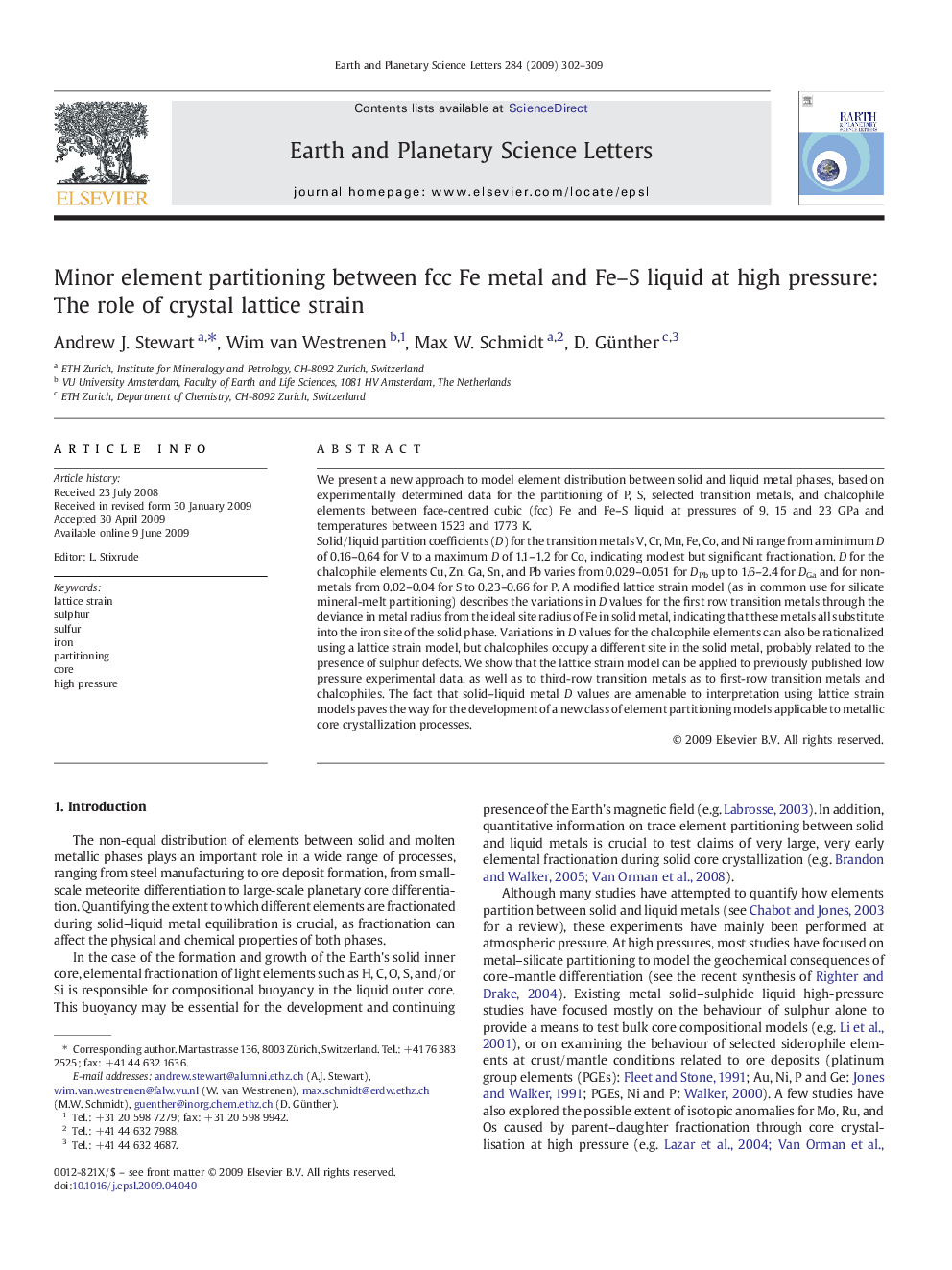| کد مقاله | کد نشریه | سال انتشار | مقاله انگلیسی | نسخه تمام متن |
|---|---|---|---|---|
| 4678983 | 1634870 | 2009 | 8 صفحه PDF | دانلود رایگان |

We present a new approach to model element distribution between solid and liquid metal phases, based on experimentally determined data for the partitioning of P, S, selected transition metals, and chalcophile elements between face-centred cubic (fcc) Fe and Fe–S liquid at pressures of 9, 15 and 23 GPa and temperatures between 1523 and 1773 K.Solid/liquid partition coefficients (D) for the transition metals V, Cr, Mn, Fe, Co, and Ni range from a minimum D of 0.16–0.64 for V to a maximum D of 1.1–1.2 for Co, indicating modest but significant fractionation. D for the chalcophile elements Cu, Zn, Ga, Sn, and Pb varies from 0.029–0.051 for DPb up to 1.6–2.4 for DGa and for non-metals from 0.02–0.04 for S to 0.23–0.66 for P. A modified lattice strain model (as in common use for silicate mineral-melt partitioning) describes the variations in D values for the first row transition metals through the deviance in metal radius from the ideal site radius of Fe in solid metal, indicating that these metals all substitute into the iron site of the solid phase. Variations in D values for the chalcophile elements can also be rationalized using a lattice strain model, but chalcophiles occupy a different site in the solid metal, probably related to the presence of sulphur defects. We show that the lattice strain model can be applied to previously published low pressure experimental data, as well as to third-row transition metals as to first-row transition metals and chalcophiles. The fact that solid–liquid metal D values are amenable to interpretation using lattice strain models paves the way for the development of a new class of element partitioning models applicable to metallic core crystallization processes.
Journal: Earth and Planetary Science Letters - Volume 284, Issues 3–4, 15 July 2009, Pages 302–309